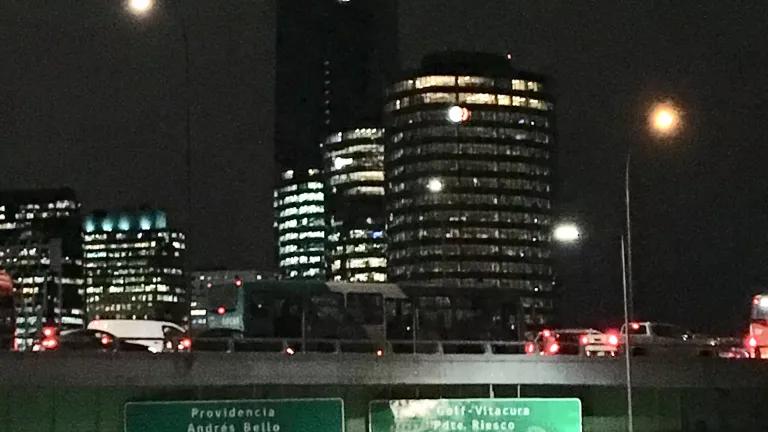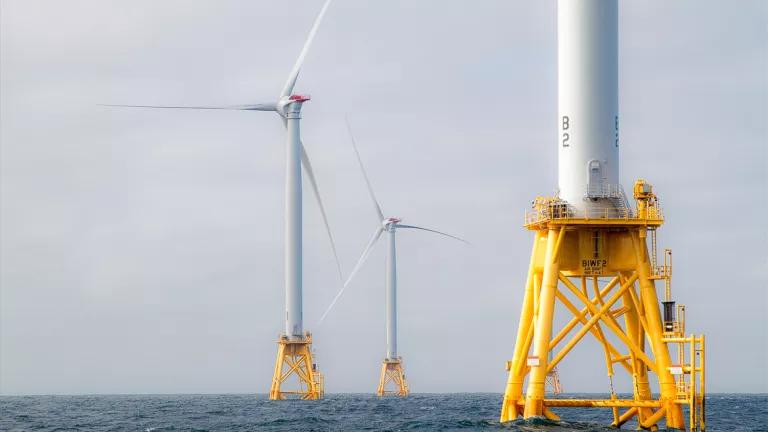Sustainable Public Transport in Latin America
Latin America has already shown that it is testing a variety of innovations and solutions for clean and sustainable public transportation systems.

congestión en las calles de Santiago, Chile
Latin America is the most urbanized region in the world, with 80 percent of people there currently living in cities. Experts predict that that percentage will rise to 90 percent by 2050. In addition, vehicle fleets in the region are growing at the highest rate in the world: the number of vehicles will triple in the next 25 years, reaching over 200 million by 2050. Unfortunately, many countries and cities in Latin America still do not have standards to improve fuel quality, vehicle emissions or fuel efficiency, so transportation creates air pollution, harms human health, and worsens climate change. In fact, the transport sector is responsible for more than a third of carbon dioxide (CO2) emissions in the region.
What does this all mean? Taken together, it means that in the coming years, more people are going to drive more vehicles in more congested areas, producing more air pollution, causing more health problems, and emitting more greenhouse gases (GHG).

Santiago at rush hour

Air pollution in Lima
But that doesn’t have to be the region’s future. And in fact, there are already positive signs showing just the opposite.
Latin America is a region of innovation, where we’ve already seen leadership and successful pilot projects to improve dirty transport systems. For example, the mayors of Buenos Aires, Mexico City, Rio de Janeiro and Santiago in Chile are among the 50 mayors of the world that have committed to reach zero GHG emissions by 2050. Medellin, Mexico City, Quito and Santiago committed to only buying zero emissions buses beginning in 2025. Costa Rica and Chile have already announced national decarbonization plans that highlight the critical role of transportation in that process. Furthermore, many countries in the region—including Costa Rica, Chile, Colombia and Mexico, among others—have already adopted various public policies that encourage the transition to electric transport.
One basic solution that could alleviate traffic congestion, air pollution, and the environmental and health impacts associated with vehicles is public transportation systems. When I say “solution” here, I want to emphasize that I am talking as much about the use of public transportation as I am the sustainability of those systems.
Latin Americans already use public transport for their everyday needs. Of the region’s total population of 570 million people, 200 million (or 35 percent) use public transport every day. People there use more public buses than in any other part of the world. According to one study, in Bogota, Medellin, Lima and Quito, people use public transport for more than half of the trips they take on a typical day. In Mexico City and Panama City, more than 70 percent of daily trips are made by public transport. By comparison, the authors of the study point out that in U.S. cities like Los Angeles and Miami, these numbers fall to just five and three percent, respectively.

Transmilenio bus in Bogota
But, when looking at the expected growth of vehicle fleets in Latin America I mentioned above, it is clear city leaders will have to do more to attract even higher percentages of people to use public transportation for daily purposes. To reduce and eventually eliminate the negative impacts of dirty transportation, those same systems would also benefit from other kinds of urban planning tools, for example, more bicycle lanes and building neighborhoods so that there are better options for pedestrians.
What’s more, clean public transportation systems—fueled by electricity instead of diesel or gasoline—are going to attract more users. Countries can take advantage of their abundant natural resources for renewable energy to power their public transport systems. Solar and wind energy provided the electricity for 60 percent of Santiago’s metro in 2018.
Electric buses already operate in many cities in Latin America, such as Medellin and Cali in Colombia, Santiago in Chile, San Jose in Costa Rica, Guayaquil in Ecuador, and Buenos Aires in Argentina. Although the majority of these buses are imported from China (or Italy, as in the Argentine case), there are also innovative local solutions that can contribute to improving public transport. Here you can see a video from May 2019 when I visited the Chilean company Reborn Electric, that is converting old dirty diesel buses into clean electric buses.
Clean and sustainable public transportation systems are a key solution worldwide to reduce the toxic impacts of dirty transport that impact people’s health, the environment and the climate. Latin America has already shown that it is testing a variety of innovations and solutions. Now leaders there must accelerate the implementation of technologies and initiatives that will secure a clean, healthy and sustainable future.




